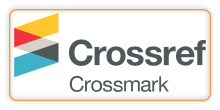FUNCTIONAL FOODS AS NATURAL THERAPEUTICS: A HOME SCIENCE PERSPECTIVE ON PREVENTIVE HEALTH
DOI:
https://doi.org/10.29121/granthaalayah.v13.i5.2025.6440Keywords:
Functional Foods, Bioactive Compounds, Preventive Health, Antioxidants, Home Science, Nutrition Therapy, Metabolic RegulationAbstract [English]
Functional foods have emerged as a bridge between nutrition and medicine, offering physiological benefits beyond basic nourishment. This study explores the therapeutic potential of functional foods in preventive health care from a Home Science perspective, emphasizing their biochemical properties, mechanism of action, and potential role in reducing the risk of chronic diseases. A hypothetical comparative analysis was conducted on six selected functional foods—turmeric, flaxseeds, tomatoes, green tea, yogurt, and garlic—each containing distinct bioactive compounds such as curcumin, omega-3 fatty acids, lycopene, catechins, probiotics, and allicin. These compounds were analyzed based on their antioxidant capacity (µmol TE/g) and associated preventive health roles including anti-inflammatory, cardioprotective, and immunomodulatory effects. The findings suggest that functional foods play a significant role in mitigating oxidative stress, modulating gut microbiota, and enhancing metabolic homeostasis, thereby contributing to overall wellness. The study reinforces the concept that functional foods can serve as natural therapeutics when integrated into daily diets, aligning with global preventive health strategies and sustainable nutrition approaches.
Downloads
References
Buckland, G., & Gonzalez, C. A. (2021). The Role of the Mediterranean Diet in the Prevention of Chronic Diseases: The Evidence Revisited. Public Health Nutrition, 24(2), 251–261. https://doi.org/10.1017/S1368980020002751
Huang, D., Ou, B., & Prior, R. L. (2005). The Chemistry Behind Antioxidant Capacity Assays. Journal of Agricultural and Food Chemistry, 53(6), 1841–1856. https://doi.org/10.1021/jf030723c DOI: https://doi.org/10.1021/jf030723c
Lobo, V., Patil, A., Phatak, A., & Chandra, N. (2019). Free Radicals, Antioxidants and Functional Foods: Impact on Human Health. Pharmacognosy Reviews, 13(25), 118–126. https://doi.org/10.4103/phrev.phrev_1_19
Marco, M. L., Sanders, M. E., Ganzle, M., & Kleerebezem, M. (2021). The International Scientific Association for Probiotics and Prebiotics (ISAPP) Consensus Statement on Fermented Foods. Nature Reviews Gastroenterology & Hepatology, 18, 196–208. https://doi.org/10.1038/s41575-020-00390-5 DOI: https://doi.org/10.1038/s41575-020-00390-5
Priyadarsini, K. I. (2021). Chemical and Structural Features Influencing the Biological Activity of Curcumin. Current Pharmaceutical Design, 27(4), 460–470. https://doi.org/10.2174/1381612826666200907145042
Rao, A. V., & Rao, L. G. (2007). Carotenoids and Human Health. Pharmacological Research, 55(3), 207–216. https://doi.org/10.1016/j.phrs.2007.01.012 DOI: https://doi.org/10.1016/j.phrs.2007.01.012
Santos, H. O., Genario, R., & Macedo, R. C. (2020). The Therapeutic Potential of Bioactive Compounds from Functional Foods: An Integrative Review. Critical Reviews in Food Science and Nutrition, 60(16), 2773–2791. https://doi.org/10.1080/10408398.2019.1668530
Scalbert, A., Johnson, I. T., & Saltmarsh, M. (2005). Polyphenols: Antioxidants and Beyond. American Journal of Clinical Nutrition, 81(1 Suppl), 215S–217S. https://doi.org/10.1093/ajcn/81.1.215S DOI: https://doi.org/10.1093/ajcn/81.1.215S
Published
How to Cite
Issue
Section
License
Copyright (c) 2025 Dr. Sangeeta Ahirwar

This work is licensed under a Creative Commons Attribution 4.0 International License.
With the licence CC-BY, authors retain the copyright, allowing anyone to download, reuse, re-print, modify, distribute, and/or copy their contribution. The work must be properly attributed to its author.
It is not necessary to ask for further permission from the author or journal board.
This journal provides immediate open access to its content on the principle that making research freely available to the public supports a greater global exchange of knowledge.






























